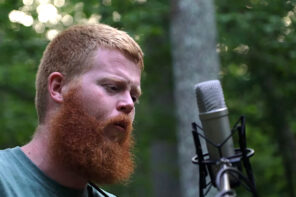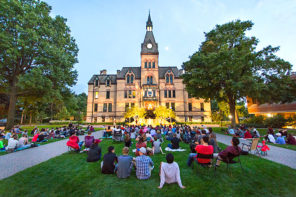The Muslim Voices Festival ended recently, and one of the last events was the Qawwali-Gospel Creation, featuring Faiz Ali Faiz and Craig Adams. As an art form, qawwali emerges from the incorporation of multiple cultural systems, and it continues to evolve by interacting with new cultures.
Bally Sagoo, a British Asian musician, succesfully marries qawwali and hip-hop, as well as qawwali and electronica. The group Fun^Da^Mental, uses qawwali extensively in their music, incorporating a wide variety of music, including gospel, electronica, South African and Tuvan music. The Dub Factory and Gaudi merge qawwali and reggae. In Pakistan, groups like Junoon give qawwali a rock make-over, demonstrating the highly flexible nature of the art form. During his life, Nusrat Fateh Ali Khan, perhaps the best-known qawwal in the US, worked with a wide variety of artists himself. He worked on a fusion with Gregorian Chant, with Peter Gabriel, Eddie Veder, Michael Brook, and Massive Attack. Faiz Ali Faiz, one of the performers for the concert, previously did a brilliant collaboration with flamenco musicians, appropriately titled Qawwali-Flamenco. As the old documentary Latcho Drom shows, there is at least a common musical heritage both are pulling upon, which arguably makes the connection easier.
_______
________
It is with this long background of re-inventing the qawwali, of having it cross-fertilize with other musics, that made the concert as a closer seem so promising. Unfortunately, the promise was never realized. There were problems with introducing what was going on, similar to the problems with the Sufi Ensembles a week earlier. More substantially, the musical marriage between these two art forms was never realized. On a superficial level, one would think that the musical and theological differences between to the two styles would pose a challenge. Although there is a probably a greater degree of sympathy between the musics than one would assume, these concerns do seem to be valid. However, the history of successful musical creations shows that artists committed to the hard work of creating a harmonious sound can achieve amazing results.
First the qawwals came out and did three songs in an ecstatic mode, visibly checked their watches, and got off stage. They were conscious of themselves, which made them conscious of their music, erecting a barrier between the listener and performer and effacing the power of the music. The gospel group came on next and did their set, which was more engaging, but still seemed conscious of something other than the moment.
Finally, the two groups came on stage at the same time. There was a piano accompaniment to a qawwali, then the qawwals did choral work on a gospel, and so on. It was the most superficial of engagements, that did nothing to further either musical tradition. The theological differences were glossed, with a gospel, “My Jesus, He’s Alright,” paired with an apparent original composition “Suno Mere Khudo [Listen, [Oh] My God].” While I think it’s important to keep the religious meanings of these traditions apparent, this sort of conflation is the worst type of theological dialogue, treating understandings of God as interchangeable. It may have been more interesting if they had a theological debate via the music. Unfortunately, the original qawwali was so simplistic “My God is the biggest [not the greatest, although perhaps that was the intent],” and “God created everything” being the most memorable lines for their sophistication, that it almost conceded the space to the gospel tradition.
When I started attending the Muslim Voices Festival, I believed it had a promise for showing in a very real way the connections amongst people. Unfortunately, this particular concert did not contribute to this history, or point the way to new cultural exchanges. Instead, it showed the results of tepid commitment to cross-cultural understanding, a soft mess that is superficially appealing, but substantively meaningless. Fortunately, so much of the Festival hit the right notes, from the Dastangoi, to the Chaikhana, to Richard III, and the surrounding events of the documentaries and museum exhibits, then the overall aim was achieved.




